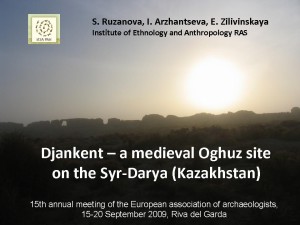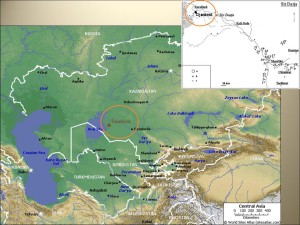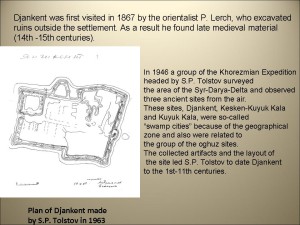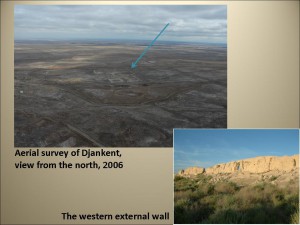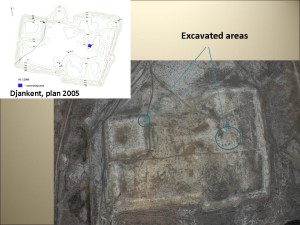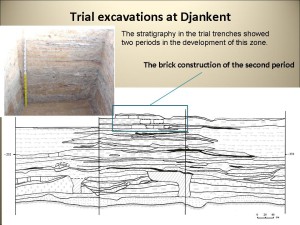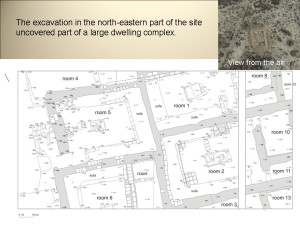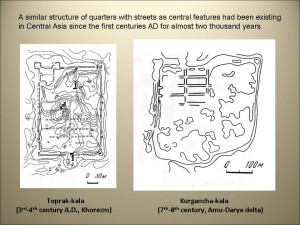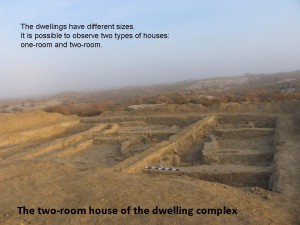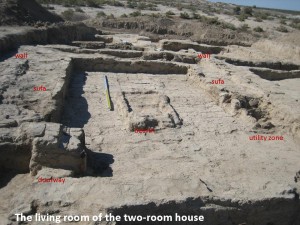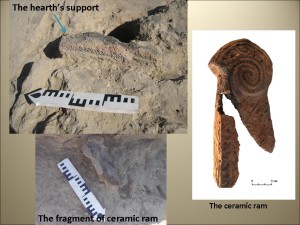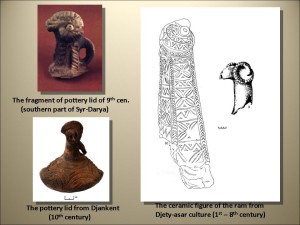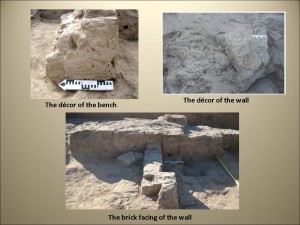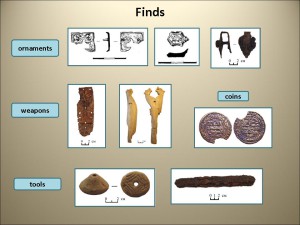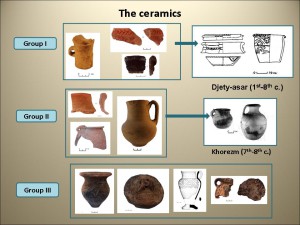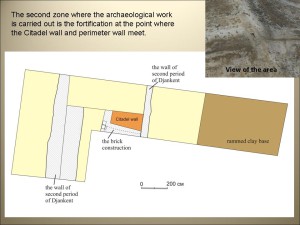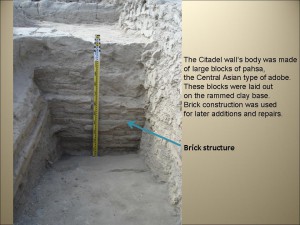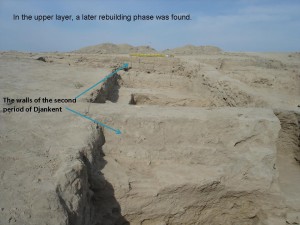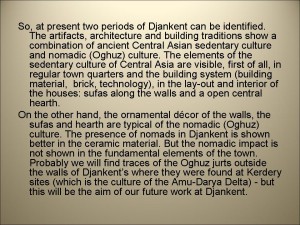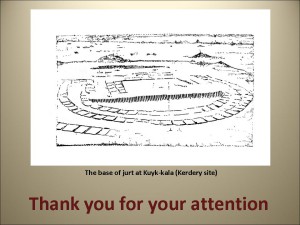Djankent – a medieval Oghuz site on Syr-Darya (Kazakhstan)
| 12.04.2013 | Posted by ruzanova_s under Archaeological complexes |
Its present name means “new” (Djan) “town” (kent). On the grounds of the ancient geographical description of the mouth of the Syr-Darya V.V. Bartold identified this site as the historical Jangikent (“New town” in Turkic, as well as Al-Karyat al-hasida and al-Madina al-Djadida in Arabic; Dih-i-naw in Persian). In various medieval documentary sources (Ibn Rustah, Ibn Hawqal, Al-Masudi, Al-Idrisi, X century A.D.) this site was mentioned as an “Oghuz town” and as the capital of the Oghuz state. Oghuz is one of the groups of Turkic peoples. Moreover, according to Ibn Rustah and Ibn Hawqal, Jangikent was the residence of the “Oghuz Yabgu”, the chief of the Oghuz tribal federation. This documentary evidence of the Oghuz towns raised the problem of the interaction of the nomads and sedentary cultures at the Syr-Darya region. To explain the appearance of “Oghuz towns” V.V. Bartold suggested that the towns were founded by sedentary people.
